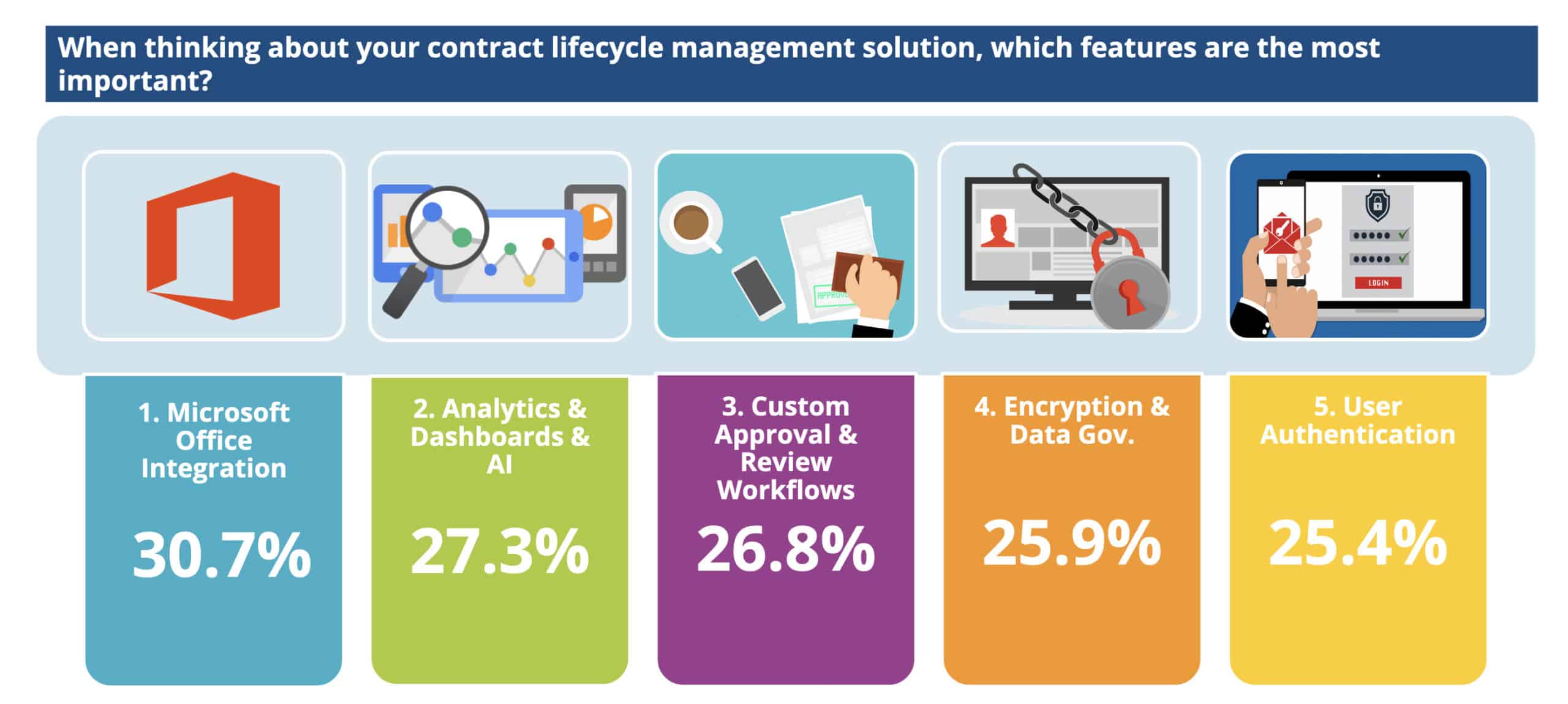More corporate legal departments are looking to adopt a CLM solution. Why? And what are the key functions and benefits they’re hoping it delivers?
Contract Lifecycle Management (CLM) is the proactive and methodical management of a contract from initiation through authoring, negotiation, and execution. That includes ensuring compliance with contract obligations, milestones and renewals.
Implementing and automating a CLM solution across an enterprise helps with all these tasks, while reducing organizational liability by increasing compliance with legal requirements and best practices. This is more important in dynamic, ever-changing business environments, where large companies have incredibly complex contractual relationships.
It’s one component in the rapid re-imagining of what the legal department can offer to the enterprise, and the part technology can play in that advance.
Among the complexities and risks that are driving legal departments to move to a CLM solution?
- The average Fortune 2000 company holds approximately 20,000-40,000 active contracts. But according to one study, 12 to 15% of all contracts within a company end up being lost or unaccounted for. The upshot of this can be serious, almost inevitably resulting in lawsuits; according to Gartner, “contract disputes represent 64% of cases in (US) state courts.”
- Moreover, there’s the fact that a company may not receive full value without contract management. A KPMG survey found that without close oversight, businesses stand to lose up to 40% of the value they’re contracted to receive from vendors and suppliers.
What’s the current state of the CLM software market? In raw numbers, it’s currently a $1.5 billion market, and it’s expected to grow at a remarkable a CAGR of 16.9%. What does the research say about what users are looking for from a CLM solution?
What CLM solution functionalities do adopters want?
When it comes to CLM functionality, IDC found that adopters and users are primarily seeking integration, insights, and security. Specifically, users care about Microsoft Office integration (30.7%), analytics & dashboards & AI (27.3%), and custom approval & review workflows (26.8%).

Source: IDC Legal Technology Buyer Survey
The average Fortune 2000 company holds approximately 20,000-40,000 active contracts.
Their biggest pain point, by far, was integration and implementation into IT infrastructure. This is a concern that a would-be CLM adopter should address by properly vetting the product and the provider they’re evaluating. How well equipped is it with APIs and connectors? What level of integration support can they expect?
But the benefits of CLM solution adoption are apparent, as IDC observed, and are worth the effort for bigger organizations:
The larger the organization, the greater the benefit from contract management software. Most are able to recover the cost of the software with the efficiency savings.
The ultimate CLM solution?
The contract management software grail for these corporate legal departments? Adopting an end-to-end CLM solution that leverages analytics to help accelerate business decisions, realize revenue faster, optimize savings, and drive efficiency.
With it, complex and inefficient contract lifecycles can be transformed into profit-optimizing assets for an organization. Another must-have? The solution should be able to seamlessly integrate into existing tech stacks and work with legacy platforms, but also can be part of a comprehensive, single-source stack designed around future flexibility, scalability, and resilience.
Mitratech offers just such a solution, so learn more about the benefits of EraCLM.
Explore EraCLM
Usher in a new era of analytics-powered Contract Lifecycle Management at your organization.



